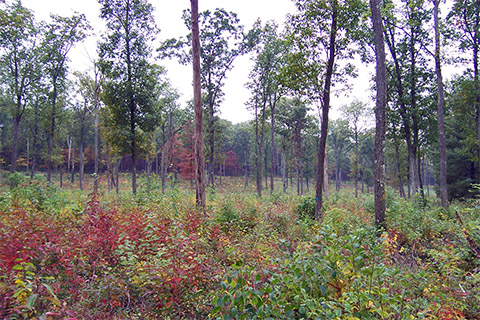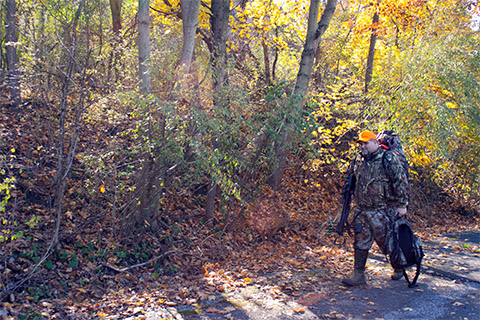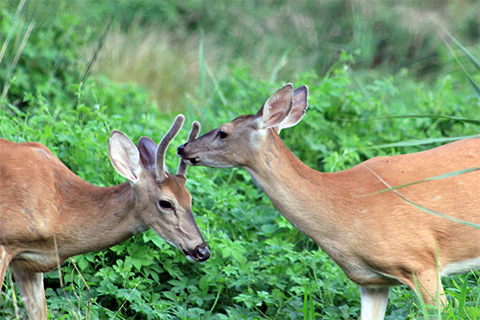A big part of Pennsylvania’s outdoor heritage is hunting. All 20 of Pennsylvania’s state forests, totaling 2.2 million acres, and 97 of the 121 state parks are open to hunting during established hunting seasons.
As hunters head to the field, efforts continue to slow the expansion of chronic wasting disease (CWD).
Contagious and always-fatal chronic wasting disease detections have been increasing in Pennsylvania’s deer since the disease was first discovered in the state in 2012.
CWD-positive deer have been detected within more than half (11 of 20) of state forest district boundaries.
All or portions of Bald Eagle, Buchanan, Clear Creek, Forbes, Gallitzin, Michaux, Moshannon, Rothrock, Tuscarora, Weiser, and William Penn state forest districts (as well as several state parks), fall within a CWD Disease Management Area, affecting nearly 400,000 acres of DCNR-managed lands.
Multi-Agency Cooperation
Natural resource managers know that the only chance for effective management and containment of this disease is through cooperation.
DCNR has been cooperating with other state and federal agencies to help combat the spread and prevalence of CWD.
As a representative member of the Pennsylvania Chronic Wasting Disease Task Force, DCNR collaborates with:
- Pennsylvania Game Commission
- Pennsylvania Department of Agriculture
- Pennsylvania Department of Environmental Protection
- Pennsylvania Department of Health
- U.S. Department of Agriculture
DCNR’s Role

DCNR functions in a support role to the greater effort to combat CWD.
The Pa. Department of Agriculture undertakes lead authority on the management of CWD on captive deer farms, and the Pennsylvania Game Commission is the lead agency that deals with CWD in wild deer.
In its supportive role, DCNR has:
- Disseminated CWD information to staff and citizens in Deer Management Areas
- Updated planning goals and objectives to curtail the spread of CWD (e.g. DMAP program)
- Helped facilitate new research while halting others that could potentially spread the disease (i.e. the golden eagle project)
- Established the DCNR Deer Working Group, which also organizes and participates in CWD Task Force meetings
- Instituted measures to increase CWD surveillance via reporting tools and siting of head drop bins
- Halted issuing written permission for feeding deer at leased camps
- Provided feedback for Game Commission and Department of Agriculture CWD programs
How You Can Help

If the commonwealth is to successfully manage CWD in Pennsylvania, it will require more than multi-agency cooperation.
To reduce the spread of CWD, the help of hunters is needed to control the deer population in Deer Management Areas.
Successful hunters also must strive to follow the recommendations for deer processing and parts disposal, while committing to submit their deer for testing if harvested in a Deer Management Area.
The hunting public should also seek to stay informed, obtaining up-to-date information about CWD in Pennsylvania.
The non-hunting public can help too.
Stay alert for deer that appear sick, and report to the Pa. Game Commission if you observe a deer that appears ill.
All Pennsylvania citizens should avoid concentrating deer by artificial feeding.
Controlling CWD will require cooperation between government agencies and citizens.
With your help, we can protect what is indisputably a keystone species -- our white-tailed deer.
Helpful Resources about CWD

Additional information about chronic wasting disease for hunters and more is available at the Pennsylvania Game Commission website.
DCNR has created a Chronic Wasting Disease in State Forests fact sheet (PDF) to provide additional information and quick facts to know.
Information and resources available for captive deer farms are available at the Pa. Department of Agriculture website.